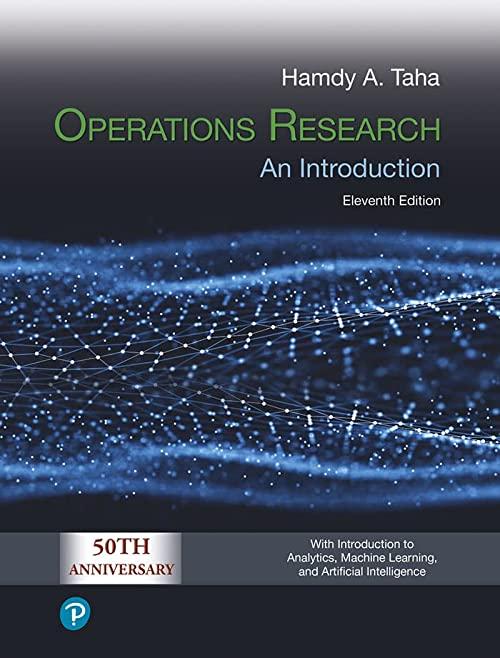In Example 1.4-2, consider the unit transportation costs ($) among the five stores as given in the
Question:
In Example 1.4-2, consider the unit transportation costs ($) among the five stores as given in the following table:
Find two different feasible solutions per the transportation model in Figure 1-3 and compare the costs.
Example 1.4-2
The following data for a hypothetical 5-store situation is used to demonstrate the development of the OR model in Step 2:
Data in the second row are computed from analytics forecasting models. The surplus and shortage rows are then computed from data in the first two rows.
Figure 1.3 summarizes the resulting transportation model. Stores 1, 3, and 5 are shipping sources, whereas stores 2 and 4 are the receiving destinations. The arrows between the sources and the destinations represent possible delivery routes, with each route dictating a specific transportation cost per transported unit. A source may distribute its supply amount among multiple destinations and a destination may fulfill its demand from multiple sources. Either way, the selected delivery schedule is optimum, as explained in Section 5.3 (Chapter 5).
Step by Step Answer:






